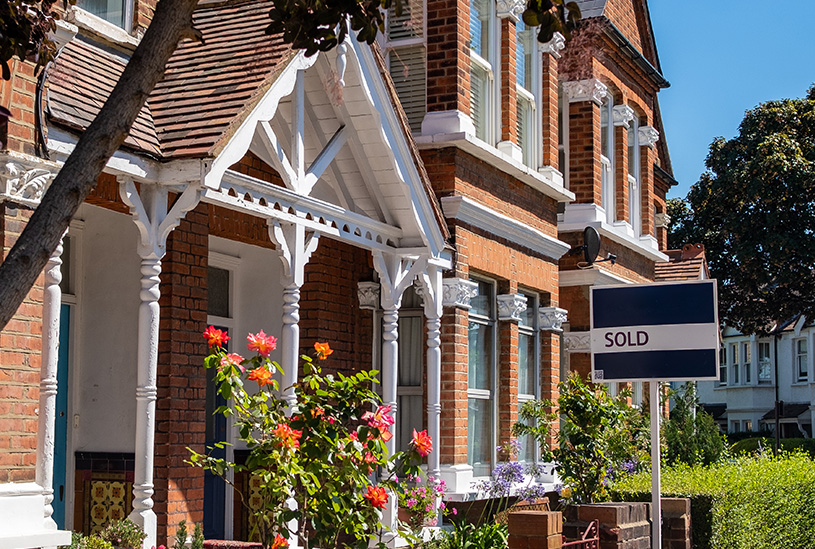Buy-to-let investors have seen a welcome dip in mortgage rates offered by some lenders in recent weeks.
A more competitive lending market is being driven by global economic uncertainty and the expectation that the Bank of England (BoE) base interest rate will be cut further this year.
What are the current best buy-to-let (BTL) rates available to landlords, and what impact have recent stamp duty changes had on the property market?
What are the average mortgage rates for BTL borrowers?
The average rate for a two-year fixed buy-to-let mortgage was 5.14 per cent in April 2025, according to Moneyfacts data. The typical rate for a five-year fix was 5.37 per cent.
Looking at the best deals on the market, West One offered an initial rate of 1.69 per cent on a two-year fixed deal (for both interest only or repayment mortgage).
And for a five-year fix, BM Solutions, Virgin Money, The Mortgage Works, West One, and HSBC all offered initial rates of under four per cent.
These products have a max loan-to-value (LTV) of between 55 per cent and 75 per cent.
For borrowers looking for a variable rate buy-to-let mortgage, these were some of the initial rates on offer in April:
- Stafford Railway Building Society – 3.3 per cent
- Furness – 4.78 per cent
- Mansfield Building Society – 4.79 per cent
- Accord – 4.84 per cent
These products have a max LTV of between 60 per cent and 75 per cent.
It’s important to note that the mortgages with the best rates often have high product fees and a high interest rate after the initial period.
Read more: How to get a buy-to-let mortgage: a simple guide
Are BTL mortgage rates rising or falling?
Average buy-to-let mortgage rates have been steady when compared with those in the homeowner market, which have been falling more quickly.
However, with the Bank of England base interest rate lowered again in May, lenders could start to reduce their rates.
Once this process begins, the market could become more competitive, allowing borrowers to shop around for the best prices.
Major lenders bring back sub-4% mortgages
One market trend for prospective borrowers to take note of is the return of mortgage deals with rates of less than four per cent.
Major lenders such as Halifax, Nationwide, and NatWest have all brought back sub-four per cent deals in response to the economic turbulence caused by President Trump’s trade tariffs.
That being said, the average rate for a two-year fixed mortgage remained at 5.14 per cent in April, with five-year fixes at 5.31 per cent, according to Uswitch.
It’s also been suggested that rates may not fall much further than their current position. This is because lenders are already reflecting future cuts to the base rate in their current deals.
Read more: Buy-to-let mortgage affordability – a guide for landlords
Will the BoE base rate drop further this year?
The Bank of England base interest rate is currently 4.25 per cent. It was reduced from 4.5 per cent in May after being cut from 4.75 per cent in February 2025.
It’s expected that the base rate could be cut again in August (down to four per cent) and potentially again in later in 2025.
The decision on whether to reduce the base rate further will depend on the rate of inflation and the economic impact of US trade tariffs.
The base rate remains below its recent peak of 5.25 per cent in August 2023 but well above the record lows seen around the time of the Covid-19 pandemic (0.1 per cent in March 2020).
Buyers rush to beat March stamp duty deadline
Mortgage completions increased by half during March 2025, ahead of the stamp duty hike from 1 April.
Barclays reported its highest number of completions since September 2021, when low interest rates were driving property market activity.
The stamp duty threshold has returned to £125,000, down from £125,000. This follows an increase to the stamp duty surcharge for buyers of second properties from three per cent to five per cent in October 2024. For buyers of rental properties, this means higher tax bills than ever before.
House price growth loses momentum
Despite a busy March, house price growth is slowing. Zoopla reported growth of 1.6 per cent in the 12 months to March 2025, down from 1.9 per cent in the 12 months to the end of 2024.
The property website says lower demand following the stamp duty rise, combined with more properties for sale, is leading to lower price growth.
More guides for buy-to-let landlords
- Renters’ Rights Bill – what do landlords need to know?
- Ban on new leasehold flats – how will this affect BTL landlords?
- 5 buy-to-let tax changes for landlords in 2025
- Taxable income sources for landlords – what do you need to know?
Get set with tailored landlord cover
Over 200,000 UK landlord policies, a 9/10 customer rating and claims handled by an award-winning team. Looking to switch or start a new policy? Run a quick landlord insurance quote today.
